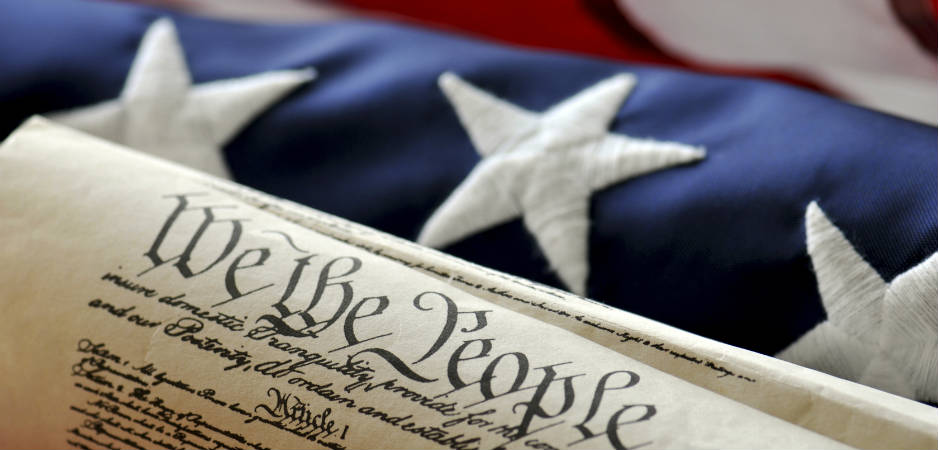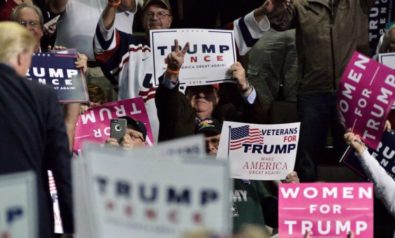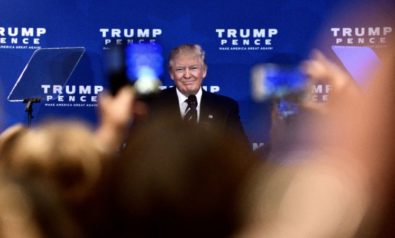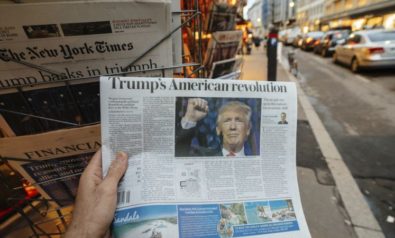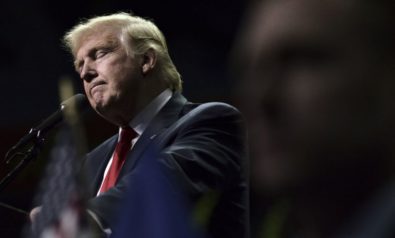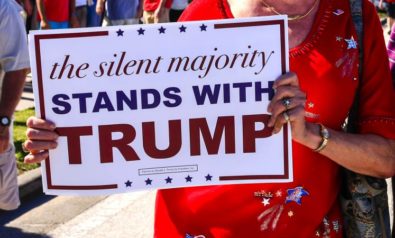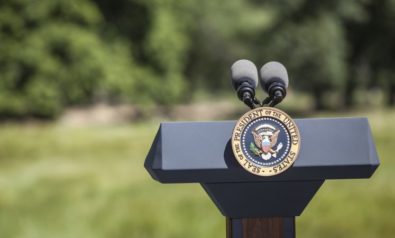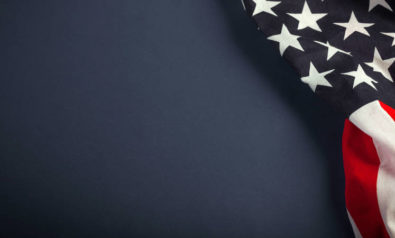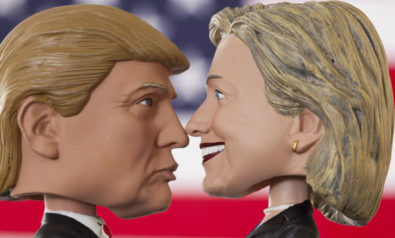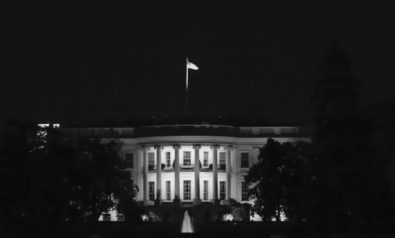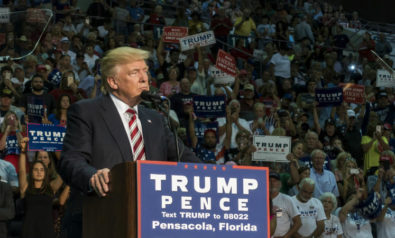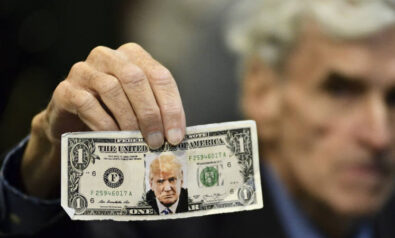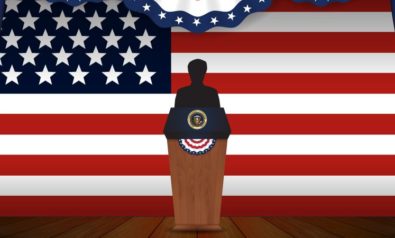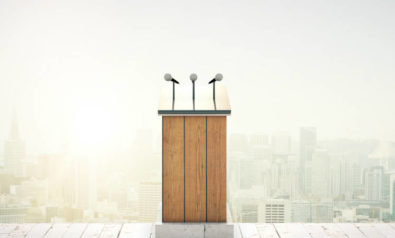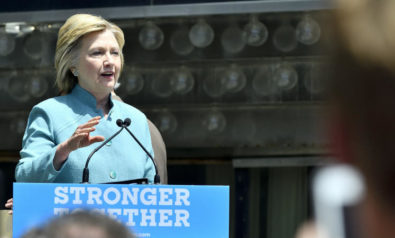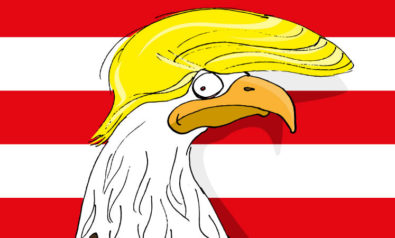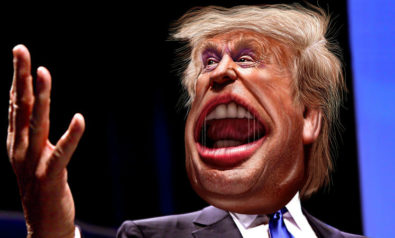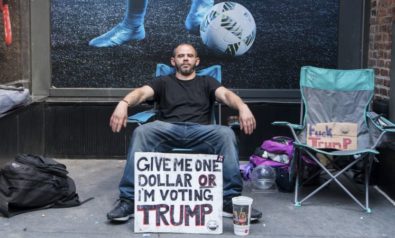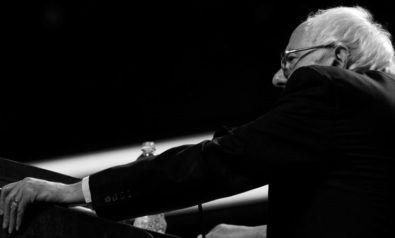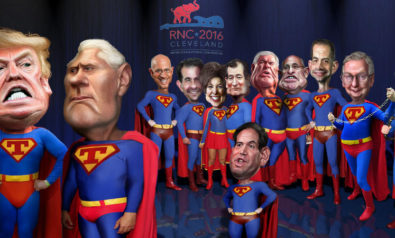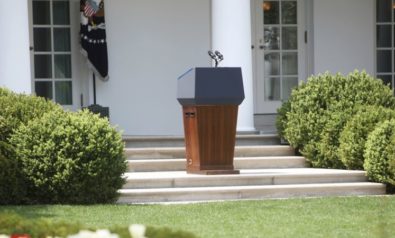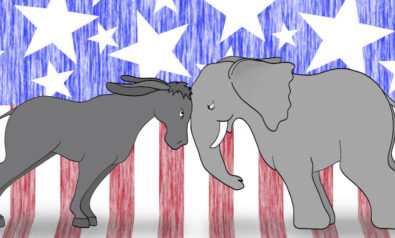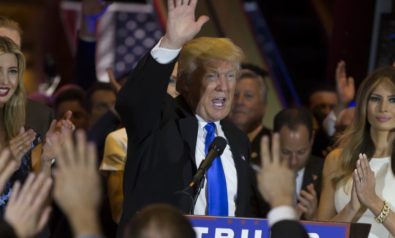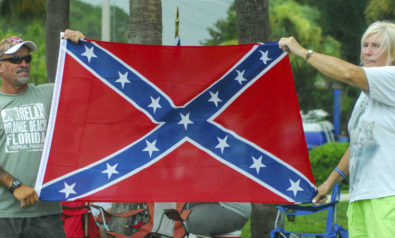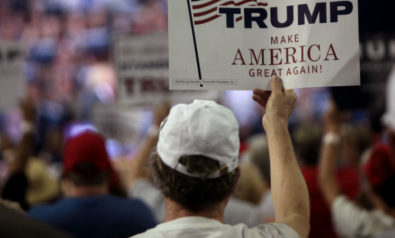Have an entrenched two-party system and antiquated process of the electoral college skewed the meaning of universal suffrage in America?
Next November Democrats, Republicans and independents will collectively decide which of two undesirable, seriously flawed candidates will be the next president of the United States. None of these three groups is happy with the binary choice that has been offered them. July has seen the Republicans nominate a candidate who many consider not to be a true Republican. This left the Democrats free to finalize their choice of a preselected candidate who, as a pillar of the establishment, happens to appeal to mainstream Republicans.
The insurgent wave of the Democratic Party—led with stunning results throughout the primaries by Bernie Sanders—could paradoxically be better described as the old wave or even the “true Democrats.” Unlike the New Democrats of Bill Clinton in the 1990s, the Sanders insurgents’ policies are modeled on Franklin Roosevelt’s New Deal. Old and new seem to have switched meanings. But now with Sanders officially backing Clinton, his supporters feel that they have been left in the lurch, betrayed by both their prophet and the party apparatus itself.
After two weeks of the glitz and pseudo-drama of the two party conventions, the suspense is over as we await the final showdown that will, according to ritual, allow voters to choose between two contrasting personalities. But this year in particular we need to be reminded that it isn’t that simple. In reality no one will actually be voting for Clinton or Trump.
On November 8, eligible citizens in 50 states and the District of Columbia will vote not for a presidential candidate but for a slate of electors who, several weeks later, will cast their state’s votes for one or the other of the candidates. In all but two cases the totality of each state’s votes will automatically go to the winning candidate. These slates of super-electors who mysteriously pool the results of their states are collectively referred to as the electoral college.
A Historical Relic
When the electoral college was created, the official name of the nation, “the United States of America” was a plural noun. Before the Civil War—which changed the very identity of the nation and turned it politically into an indivisible union—you would say, for example, “the United States have declared war,” whereas after 1865 it became “the United States has declared war.”
The nation was originally a system of federal representation grouping the autonomous political entities called states. The word state had a meaning at the time very similar to that of nation. Think of Louis XIV’s “l’état, c’est moi” (something Donald Trump, once elected, might be tempted to say, if he spoke French). The president’s role was to preside, to work alongside Congress—representing each of the states—so as to ensure a minimum of coordination around common goals among these autonomous entities.
George W. Bush was credited in the initial count with 537 votes out of a total of nearly 6,000,000 votes. He led and won the presidency by a whopping .00009% in Florida alone.
This conception of executive responsibility contrasts radically with what presidents do today. When the states were the essential political reality, there was no standing army. This incidentally was a key reason behind the drafting of the Second Amendment, which formally acknowledged the need for state militias. That is why the president was called the “commander in chief” because in case of a national military campaign he would be the unique authority over the disparate militias provided by the states.
In other words, Americans today live in a very different world. The nation is no longer a federation of autonomous states. Yet we still rely on an antiquated electoral system devised for the purpose of selecting a leader whose job was to coordinate a number of states rather than to run the country. Any objective political analyst today must recognize that if the electoral college continues to exist, it is due to a combination of natural inertia and a typically American secular faith in the infused “wisdom of the Constitution,” considered by some as a religious relic.
Changing the electoral college’s status or abolishing it would, in any case, require a constitutional amendment, though Rhode Island’s governor, Lincoln Chafee recently initiated a clever scheme to have the states voluntarily adhere to an automatic alignment of their electoral votes on the national popular vote. Unfortunately, it failed due to lack of support from a requisite number of states.
Embarrassing Futility of Reform
The fiasco of the 2000 presidential election raised serious questions about a system that allowed the candidate with the most popular votes to lose after a particularly messy battle through the courts. At the time I suggested a simpler idea that would have avoided the six-week drama of the hanging chads and butterfly ballots, to say nothing of the injustice of leaving the decision up to nine justices.
George W. Bush was credited in the initial count with 537 votes out of a total of nearly 6,000,000 votes. He led and won the presidency by a whopping .00009% in Florida alone. The simple reform I imagined would have provided that when the difference between the two leading candidates was less than 0.01% (or some other negligible amount), the number of electoral votes should be evenly divided between the candidates. In case of an odd number of electoral votes for the state, the extra vote would go to the one initially declared the winner.
Call it the justice of Solomon, with no risk of a mother losing her legitimate child. In 2000 this would have made Al Gore president instead of Bush, thanks to a significant margin in both the popular and electoral vote. History and historical inertia decided otherwise. Whether such a simple reform would require a constitutional amendment or not I leave to the lawyers to work out. I still think it’s worth a try.
It’s obvious that a rational reform of this type, in spite of the fact that it respectfully avoids the existential trauma of calling into question the electoral college, would never be seriously considered. It’s too simple and rational. I noticed that it isn’t in the otherwise exhaustive list of possible reforms of the electoral college proposed by Fairvote.org. The reality is that for some time to come the electoral college will continue to be the method for electing US presidents.
This will be depressing news for the kind of third party movements that appear to be emerging as the two traditional parties court implosion. For a minority party, the only hope of scoring a respectable number of electoral votes and having an impact on both politicians and the media, would be to win a state, an impossibility in the face of the current party duopoly. The result is that third parties are routinely ignored and marginalized.
Hobson’s Choice?
But things need not seem so bleak. The nature of this year’s insurgency that has clearly destabilized both major parties presents a different opportunity, in particular for the Bernie Sanders loyalists. Many of them are now making their decision to follow his instructions and support Hillary Clinton in order to bar Trump’s march to the White House. But they feel enormously frustrated at having lost not only the contest but also their voice, that of the man himself.
As a newly converted loyal insider who has made his mark in the shouting match of the primaries, Sanders may indeed be able to influence a future Clinton administration’s policies. That at least is the ray of hope that’s the movement can cling to today. It is a tenuous hope at best, since the strategy Clinton is most likely to adopt appears to be that of a center-right appeal to Republicans revolted by Trump.
Bernie loyalists in safe states will be free to defy the traditional two-party logic, with no risk to the final outcome. They can support a candidate and a party that represents their insurgent ideals.
Prominent Bernie supporters have begun the delicate balancing act of pleading for the movement to continue and develop while at the same time urging progressives to vote for Hillary Clinton. Robert Reich summed it up in a debate this week with Chris Hedges on Democracy Now.
And right now, given our two-party, winner-take-all system with regard to the electoral college, it’s just too much of a risk to go and to say, I’m not going to vote for the lesser of two evils. Your conscience needs to be aware that if you do not support Hillary Clinton, you are increasing the odds of a true, clear and present danger to the United States.
For many of Bernie’s followers this is a hard pill to swallow. For Hedges, it is time to draw a line in the sand, take a stand by voting for a third party and assume the risk of having Trump instead of Clinton in the White House. He claims that there will be little difference between them since they are only likely to be figureheads at best, with different blond hairstyles.
Game the System
But there may be a way forward that respects both sides in this debate. And the beauty of it is that it uses the very flaws of the electoral college system to achieve its aim.
Numerous commentators have pointed out that an entrenched two-party system combined with the antiquated process of the electoral college have skewed the meaning of universal suffrage. The electoral map, divided into red and blue, splits along another fault line: safe states vs. swing states. Safe states are ones that can be counted on to vote either blue (Democrat) or red (Republican). Swing states or battleground states can go either way and have enough electoral votes to influence the outcome of a close election.
Because the parties and candidates are aware of this, they focus all their attention on swing states to the point of neglecting the safe states. The map varies from year to year according to the polls. Typically, Florida—which decided the 2000 race—Ohio, Pennsylvania, Michigan and Virginia are on the list. This is where a strategy emerges for Bernie Democrats looking to keep the movement alive while at the same time preventing Trump from winning. The solution is glaringly simple.
Progressives who vote in swing states will be in a position to influence the outcome of the election. Their vote for Hillary will be an effective vote against Trump. They can put their revolutionary fervor on hold, follow Bernie’s advice and help Clinton keep Trump at bay. In contrast, the Bernie loyalists in safe states will be free to defy the traditional two-party logic, with no risk to the final outcome. They can support a candidate and a party that represents their insurgent ideals. This would most likely be Jill Stein of the Green Party, who offered to run with Sanders at the head of her ticket. These voters would literally be playing it safe. If they were organized, that could even become their slogan.
A Safe Way to Swing
Why would progressives do this? By boosting the overall popular vote of the Green Party they would be able to demonstrate the growing force of their movement. It would also be a wake-up call for the Democratic Party, whose leaders may appreciate, after analyzing the statistics the media will gratefully supply, that, had they been free to vote their conscience, many of those who helped Clinton to victory in the swing states would have preferred Sanders or a candidate clearly less establishment than Clinton. This would lend the anti-establishment wing of the Democratic Party greater clout in the electoral and legislative battles to come.
If this strategy were sufficiently publicized, it could also boost the critical poll numbers for Jill Stein—numbers that determine eligibility to participate in the presidential debates. To get a podium at the debate, so-called nonpartisan candidates (neither Democrat nor Republican) are required to poll at 15% of the national electorate.
Of course, the Democrats would frown on seeing a third debater threatening to pull votes away from Clinton, but if the strategy is observed in the swing states, it will have no effect on the outcome of the election. On the other hand, by showing that there is a real threat of a left-wing challenge to the turgid establishment in future elections it will contribute to a serious redefinition of the political culture of the nation, have an effect on the program of the Democratic Party and remodel existing power relationships, in particular, weakening the chances of installing a Clinton Foundation dynasty (especially with Chelsea waiting in the wings).
If in any of the red states, which Trump would naturally win in the head to head with Clinton, it appeared that the combined numbers for Clinton and Stein were greater than Trump’s, the glory of Trump’s victory in those states would be seriously diminished.
The most vocal Bernie supporters are adamant about keeping the movement alive. This would be a way of doing so without Bernie Sanders as their leader, who undoubtedly will remain in the Clinton camp, but especially without incurring the blame for electing Trump because the strength of their numbers would only appear in safe states. In recent weeks, the Clintonites have been consistently rolling out the mantra, Ralph Nader stole the 2000 election for Bush. He didn’t—but that’s another story.
But there is a further possible advantage, which will please the creative analysts of statistics who populate the media. If in any of the red states, which Trump would naturally win in the head to head with Clinton, it appeared that the combined numbers for Clinton and Stein were greater than Trump’s, the glory of Trump’s victory in those states would be seriously diminished. He would still get the electoral votes but would be seen for what he truly is, a minority candidate with a low popularity rating. This would be an effective way of demonstrating that Trump’s past and possibly future success has depended more on the weakness of his opponents rather than on the quality of his appeal.
This election cycle, which began with the near certainty in most commentators’ minds that we were preparing for a battle between two dynasties—the Bushes and Clintons—has contained a long series of surprises. Who would be astonished to see one more surprising development? For the disappointed followers of Bernie, the game plan for this one is there for the taking.
The views expressed in this article are the author’s own and do not necessarily reflect Fair Observer’s editorial policy.
Photo Credit: alancrosthwaite
 We bring you perspectives from around the world. Help us to inform and educate. Your donation is tax-deductible. Join over 400 people to become a donor or you could choose to be a sponsor.
We bring you perspectives from around the world. Help us to inform and educate. Your donation is tax-deductible. Join over 400 people to become a donor or you could choose to be a sponsor.
Support Fair Observer
We rely on your support for our independence, diversity and quality.
For more than 10 years, Fair Observer has been free, fair and independent. No billionaire owns us, no advertisers control us. We are a reader-supported nonprofit. Unlike many other publications, we keep our content free for readers regardless of where they live or whether they can afford to pay. We have no paywalls and no ads.
In the post-truth era of fake news, echo chambers and filter bubbles, we publish a plurality of perspectives from around the world. Anyone can publish with us, but everyone goes through a rigorous editorial process. So, you get fact-checked, well-reasoned content instead of noise.
We publish 3,000+ voices from 90+ countries. We also conduct education and training programs
on subjects ranging from digital media and journalism to writing and critical thinking. This
doesn’t come cheap. Servers, editors, trainers and web developers cost
money.
Please consider supporting us on a regular basis as a recurring donor or a
sustaining member.
Will you support FO’s journalism?
We rely on your support for our independence, diversity and quality.


